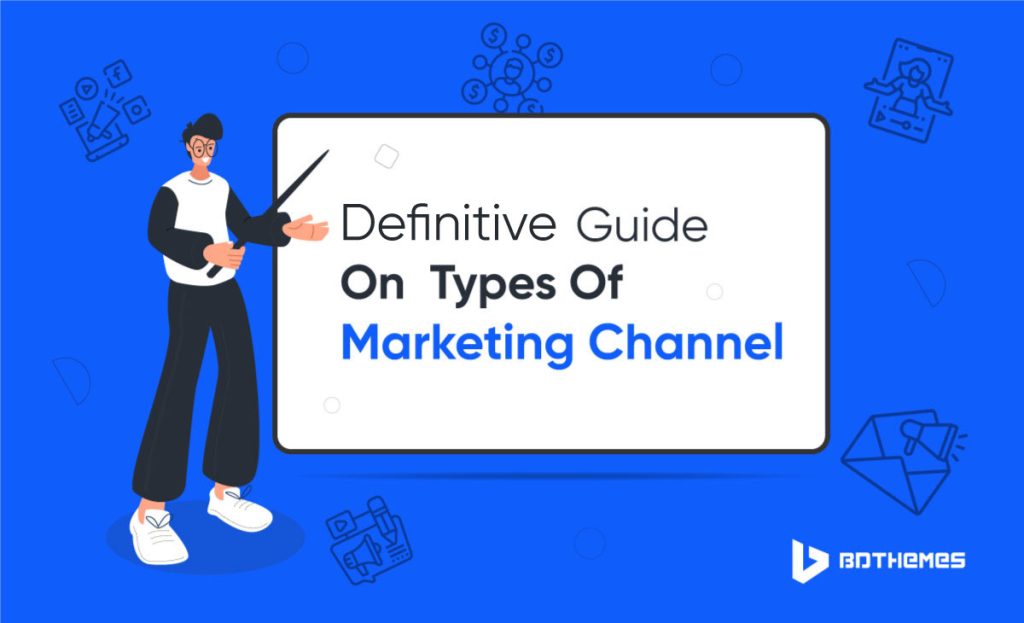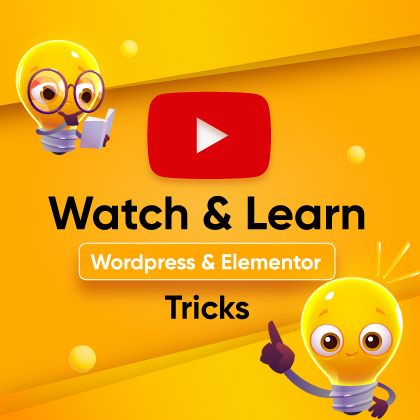If you are interested in learning how the business works with marketing, read this article about the Types of Marketing Channel and their functions.
It can be tough to understand how businesses advertise and sell their stuff so that you could come up with your own ideas for promoting things in the future.
Luckily, there’s a way to make things clearer: learning about different types of marketing channels!
The information you are about to learn is fetched from expert marketers who shared their insights and knowledge.
So, buckle up and start absorbing the knowledge.
The Definition of a marketing channel
A marketing channel is a crucial factor for a successful business as it helps to deliver or promote a product to the possible end-user.
As companies run their businesses with both physical and digital products, the definitions are not the same. Let’s take a look at them:
For physical products-
A marketing channel is a system used by a company that arranges a set of manpower and activities and depends on intermediaries to deliver products to the end customers.
Whereas, SaaS companies i.e.: us, don’t use any physical forms of products, sales points, and value exchanges,
So, for digital products-
A marketing channel is a digital way to promote products and offers to the targeted consumers and get their feedback.
There are some points you should care about to make a channel effective. These are-
Requirements for an effective marketing channel:
According to the norm, the main requirements of an effective marketing channel may consist of the following functions-
- Careful planning
> A good plan makes the whole picture possible. - Coordination
> Team play is required to pull the entire project swiftly. - Understand the customer’s need
> Knowing what the customers want helps plan execution. - Provide quality products or service
> Serve the customers with quality results for better user satisfaction. - Good management
> Maintain proper delivery to the customer without a chance to complain.
These are just the generalized terms we won’t discuss further in this article.
Why marketing channel is important?
All companies share the same goal- to make a smooth product flow to the end consumer and gain their satisfaction to continue the business.
For that, proper marketing channels are the best choice to do it right.
You ask why? Well because marketing channels can-
- Connect you with possible customers easily.
- Make ways to deliver products to consumers.
- Feed the audience with product/service information through multiple platforms.
- Build trust and continues the business flow.
Now, let’s see what are the types of marketing channels:
4 Mainstream Marketing Channels
We can point out 4 mainstream marketing channels used by most companies around the world. They are-
- Free
- Paid
- Digital
- Traditional
We are adding some introductory details about them right below.
Free
A free marketing channel refers to a promotional approach that a business can utilize without incurring any direct costs.
In other words, it is a method of marketing that requires only time and effort, without the need for monetary investment.
Some examples of free marketing channels include social media marketing, content marketing, search engine optimization (SEO), email marketing, and other forms of organic or non-paid advertising.
Paid
A paid marketing channel refers to a promotional activity that requires monetary investment, typically through payment for advertising, in order to reach the target customers.
Unlike free channels, paid marketing channels offer the advantage of quickly reaching a larger audience, generating leads, and driving more sales.
We can name Google Ads, Facebook Ads, Pay-per-Click (PPC) Ads, Banner Ads, and Influencer marketing as examples of this channel.
Digital
A digital marketing channel can be defined as the marketing practice that uses digital technologies i.e.: the internet, search engines, social media, email, mobile devices, and other digital platforms to promote products.
It is highly diverse and includes a wide range of tactics i.e.: content marketing, email marketing, SEO, social media marketing, mobile marketing, and display advertising.
One significant advantage of these channels is the ability to measure and analyze the received information in real-time.
Traditional
Under a traditional marketing channel, businesses employ conventional methods such as print ads, radio and television ads, direct mail campaigns, and telemarketing to reach their customers.
This includes physical advertisements such as billboards, posters, brochures, and flyers as common promotional materials.
Additionally, live events, such as trade shows or conferences, are often organized to provide face-to-face interactions with potential consumers.
What do you need to know about each marketing channel?
Now, let’s dig deeper so we can understand each one of them and their functionalities.
1. Free Channels - Components and use cases, Pros, Cons
The components of a free marketing channel include:
- Self-promotion: The producer explains the benefits of the products to the customers in social platforms, neighborhood, or door-to-door where almost no marketing cost is needed.
- Direct Sales: The sales happen directly by the producer without relying on any third-party sales handler. In most cases, the third-party handler is responsible for marketing which is avoided in free channels.
- Pricing Strategy: The products/services come at a lucrative price point where customers are more prone to opt in for the offers.
- Distribution Strategy: The producer may need to deliver the product or service directly to the end consumer which serves as a free marketing also.
- Customer Relationship Management (CRM): The producer uses free CRMs to build and maintain relationships with the end consumers.
- Referral Programs: Encouraging existing customers to refer your products or services to others. This can be done through referral incentives, discounts, or rewards for successful referrals.
- Online Directories and Listings: List your business in relevant online directories, such as Google My Business, Yelp, and industry-specific directories.
- Cost Savings: By selling directly to the end consumer without the involvement of intermediaries, costs can be minimized for distribution and marketing.
- Customer Engagement: By directly interacting with the end consumer, producers can build strong relationships and brand loyalty, resulting in repeat business and positive word-of-mouth marketing.
- Flexibility: Businesses can enjoy more flexibility to adjust their strategy quickly based on market trends and customer feedback.
- Personalization: Allows producers to provide a more personalized selling experience, which can be particularly effective for high-end or customized products.
The pros and cons of free marketing channel
- Cost-Free marketing saves you a lot of budget.
- Lets you connect with your customers without any interference.
- You can monopolize your business.
- Direct growth hacks and feedback.
- Possible to scale up at almost no marketing cost.
- Accessibility to businesses of all sizes
- Builds organic and authentic connections with the audience
- Long-term sustainability
- Enhances brand credibility and trust
Cons:
- You can reach only a portion of your target customers.
- Time and effort-intensive
- Lack of expertise severely harms the marketing approaches.
- It gets tougher to outperform your competition.
- Dependence on algorithm changes (e.g., search engine updates, social media algorithms)
- Slower results compared to paid advertising
- Requires continuous monitoring
In short, free marketing channels can be valuable, but they may require significant time and effort investment to yield desired results.
2. Paid Channels - Components and use cases, Pros, Cons
The components of a paid channel include:
- Ad Campaigns: Businesses require creating ad campaigns tailored to the target audience and their interests. Involves lots of market research and AB testing.
- Ad Creatives: Ad copy, images, videos, or animations; these ad creatives should be attention-grabbing, informative, and relevant.
- Landing Pages: There should be tailored landing pages where you are aiming to bring your visitors to convert them into customers.
The use cases for a paid marketing channel include:
- Brand Awareness: Paid channels are best for reaching a wider audience and increasing Brand visibility quicker.
- Lead Generation: Capturing user information in exchange for a lead magnet such as an e-book, whitepaper, or webinar is faster here. PPC advertising and social media advertising are effective channels for lead generation.
- Sales and Conversions: PPC advertising and influencer marketing are effective channels for driving sales and conversions.
- Retargeting: You can use it to retarget users who have already interacted with the brand but did not convert with ads and offers.
The pros and cons of paid marketing channel
Like the free marketing channels, the Paid channels also come with advantages and disadvantages. let’s have a look:
Pros:
- Easy to reach a large target audience.
- Instant brand visibility prospects.
- Site traffic boost with paid ads.
- Analytics for measured results.
- Allows you to swiftly allocate your ads budget precisely.
- Tailored campaigns for better results.
- More advantage over the competition.
- Quick testing and campaign optimizations.
Cons:
- An expensive route that earns a lot by spending a lot.
- Competition is still visible and powerplay is active.
- Ad fatigue or ad blindness due to ad repetitions.
- Less organic reach & more dependent on paid platforms.
- Overspending and zero return risks involved.
- Customer trust issues, ads fraud, and click baits.
- Not sustainable in the longer term.
In brief, paid channels give your business a big boost at first, but the good effects start to diminish after a while.
That’s why we recommend using paid methods only during offers or special campaigns instead of full-time.
3. Digital Channels - Components and use cases, Pros, Cons
Digital marketing channels include a wide range of online platforms and tools to promote products and convert users to customers.
Includes digital platforms, forums, affiliate marketing, video marketing, social media channels, etc. marketing campaigns.
A digital marketing channel includes these components:
- Website/Landing page: A landing page usually consist of product/service information, pricing, offers, CTAs, and such promotional content.
- Search engines: Search engines like Google and Bing provide businesses with the opportunity to be discovered by potential customers when they search for relevant keywords or phrases.
- Social media: Social platforms like Facebook, Instagram, Twitter, and LinkedIn offer businesses the ability to connect with their audience, share content, and build relationships.
- Email marketing: Email is best to communicate directly with the audience through personalized messages (including Hot & Cold emails).
- Content marketing: Businesses create valuable and informative content (blog posts, videos, infographics, and more) to attract and engage with the audience.
The use cases of a digital channel:
- Brand awareness: Producers can reach millions of people in hours over the internet to spread their brand name and publicize it.
- Lead generation: Digital marketing is a highly effective way to generate solid leads across the continent through email marketing, social media advertising, etc.
- Customer engagement: Digital channels offer faster producer-to-customer communication through social media, live chat, forum, or email.
- Boost sales: All shorts of businesses can utilize digital platforms to reach a variety of new customers and receive a sales boost.
- Customer retention: Can also be used to retain customers and build long-term relationships. Nurturing loyal customers helps build brand values and increase fixed profits.
Here are the Pros and Cons of a digital channel:
This channel has become a vital part of modern business strategies. While it has many advantages, there are also some drawbacks to consider. These are given below:
Pros:
- Faster audience reach capabilities.
- Significantly cost-effective marketing.
- Real-time data monitoring and analytics.
- Targeted advertisements
- Enhanced customer engagement.
- Faster results.
- More personalization on promotions.
- Global audience reach.
Cons:
- Ads need repeated exposure for attention.
- Some digital channels can be more expensive.
- Mostly targeting ready-to-buy customers only.
- Time-consuming and research-intensive.
- Lack of control over content in PR.
- Good networking skills and time investment are required.
- Ads fatigue and ads blindness.
Digital marketing channels can bring tremendous results with proper market research, planning, and execution.
Bonus: Learn about careers in Digital Marketing
4. Traditional Channels - Components and use cases, Pros, Cons
The components of traditional channel include:
- Direct mail: Direct mail advertising involves sending promotional materials such as flyers, catalogs, and coupons directly to customers’ mailboxes.
- Print media: Advertising includes ads placed in newspapers, magazines, and other print publications.
- Radio: Transmission of ads on radio stations to reach a targeted audience.
- Television: Ads and commercials on television channels to reach a broad audience.
- Outdoor advertising: Advertising includes billboards, posters, and other signage placed in public spaces to reach a broad audience.
The use cases of this channel:
- Local targeting: It is more effective at reaching local audiences through the non-digital network. Also applicable to global businesses with local operational branches.
- Brand awareness: Best for building brand awareness in local area.
- Sales promotion: Producers can create consistent sales promotion by using billboards, flyers, banners, or tv/radio ads.
- Reputation management: Most reputed brands has been involved in traditional marketing as a part of their marketing strategy. So, it’s a norm now.
- Events and sponsorships: Sponsor events or sports teams, which can help to build brand recognition and reach a targeted audience.
The Pros and Cons of a traditional marketing channel:
Pros:
- Most people are already familiar with this marketing.
- Can be more personalized and friendly.
- Non-segmented audience reach.
- Provide a crystal clear message to the audience.
- Faster audience reach than free channels.
- Best for building customer trust.
- Multisensory ads experience.
- Local Community Support.
- A very long ad lifespan.
Cons:
- Often traditional marketing channels cost a large buck.
- Customer response is considerably slower.
- Limited targeting ability on specific audiences.
- Environmental impact is high.
- Difficult to measure and track progress.
- Much slower than digital channels.
- Very large competition.
If your business model is focused on the local market, traditional marketing channels are most suited for you.
Frequently Asked Questions (FAQ)
Q. Which marketing channel should I go for as a WooCommerce store owner?
=> As a WooCommerce store owner, consider the following factors when choosing a marketing channel:
Target audience: Identify where your customers spend time online and which channels they are most responsive to.
Budget: Evaluate your marketing budget and determine which channels align with your financial resources.
Goals: Define your marketing objectives (e.g., increasing sales, boosting brand awareness) and select channels that align with those goals.
Expertise: Consider your team’s skills and expertise in managing different marketing channels effectively.
Competition: Analyze your competitors’ marketing strategies and identify gaps or opportunities for your store.
Based on these factors, you will be able to identify whether you require free, paid, digital, or traditional marketing approaches to reach your goal.
Q. Are there any specific marketing channels that work well for WooCommerce stores?
=> The effectiveness of marketing channels can vary depending on your specific business and target audience. However, some channels commonly used by WooCommerce store owners include:
- Paid advertising (Google Ads, social media ads)
- Email marketing
- SEO (optimizing your store for search engines)
- Content marketing (blogging, product videos)
- Social media marketing (leveraging platforms where your consumers are active)
- Influencer marketing (collaborating with relevant influencers in your niche)
Q. Should I prioritize organic or paid marketing channels?
=> The ideal approach is to have a balanced mix.
Organic channels (such as SEO and content) can provide long-term benefits and help establish your brand’s credibility, while paid channels (such as advertising) can offer immediate visibility and targeted reach.
So, it’s best to find the right balance based on your goals, budget, and resources.
Q. I have a SaaS company. Can traditional marketing channels help me?
=> Traditional marketing channels may not be the most effective way to help a SaaS company as they mainly focus on local or regional consumers.
On the contrary, a SaaS company tends to run its business globally and target a vast audience in each corner of the world.
However, there are still some opportunities for your SaaS company. These are:
- Events and conferences: Attending industry events and conferences can help SaaS companies build relationships with potential customers and generate leads.
- Public relations: Traditional media outlets can help SaaS companies build credibility and generate awareness through press releases, media interviews, and other PR efforts.
- Direct mail: While it may be more expensive, direct mail can be effective for reaching high-value customers or decision-makers in targeted industries.
Let's Wrap Up
We hope this article was able to put some thoughts into your knowledge so you can better choose the type of marketing channel for your business.
Also, we would be happy to hear about your experiences in promoting your brands, the problems you faced, and the solutions you came up with.
Feel free to comment and email us so we can converse.







